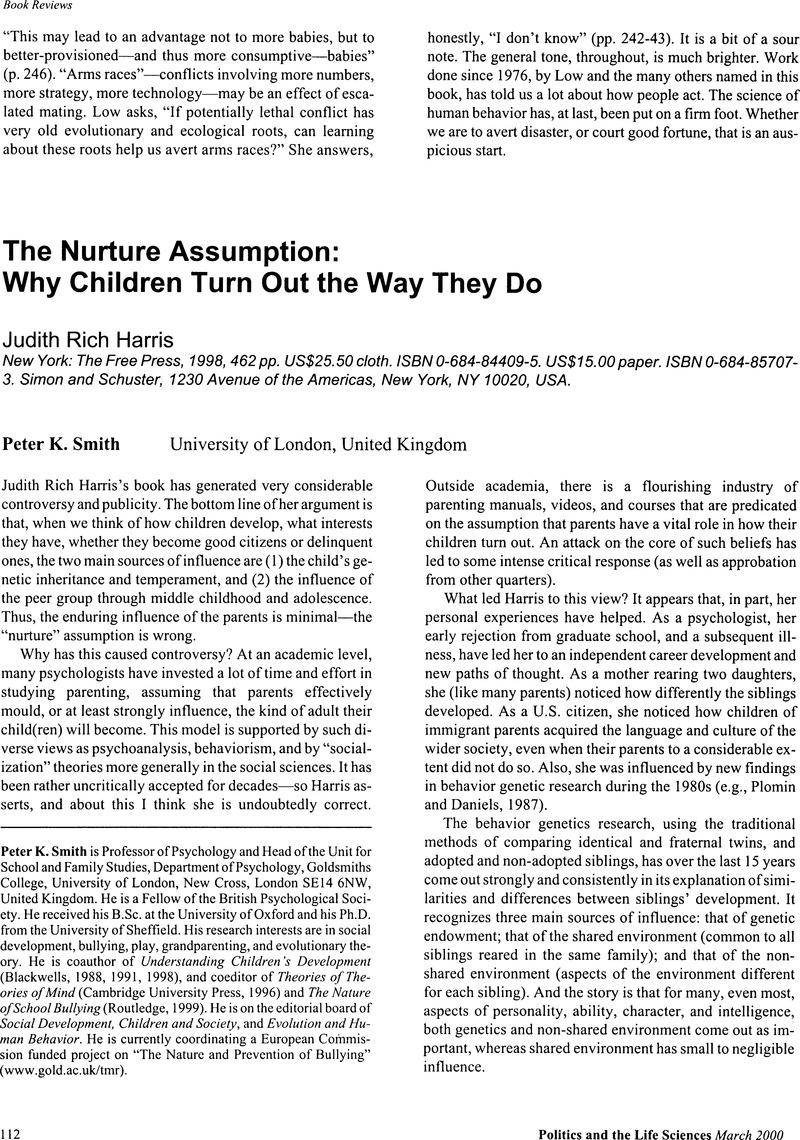No CrossRef data available.
Article contents
The Nurture Assumption: Why Children Turn Out the Way They Do - Judith Rich Harris New York: The Free Press, 1998, 462 pp. US$25.50 cloth. ISBN 0-684-84409-5. US$15.00 paper. ISBN 0-684-85707-3. Simon and Schuster, 1230 Avenue of the Americas, New York, NY 10020, USA.
Published online by Cambridge University Press: 17 May 2016
Abstract
An abstract is not available for this content so a preview has been provided. Please use the Get access link above for information on how to access this content.

- Type
- Book Reviews
- Information
- Copyright
- Copyright © Association for Politics and the Life Sciences
References
Harris, J.R. (1995). “Where is the Child's Environment? A Group Socialization Theory of Development.” Psychological Review 102:458–489.Google Scholar
Collins, A.A., Maccoby, E.E., Steinberg, L., Hetherington, E.M., and Bornstein, M.H. (2000). “Contemporary Research on Parenting: The Case for Nature and Nurture.” American Psychologist 55:218–232.Google Scholar
Plomin, R. and Daniels, D. (1987). “Why Are Children in the Same Family So Different from One Another?” Behavioral and Brain Sciences 10:1–60.Google Scholar
Scarr, S. (1992). “Developmental Theories for the 1990s: Development and Individual Differences.” Child Development 63:1–19.Google Scholar
Van Ijzendoorn, M.H. (1995). “Adult Attachment Representations.” Psychological Bulletin 117:387–403.Google Scholar




